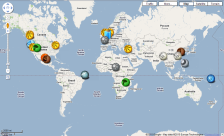Shineanthology’s Weblog
An anthology of optimistic, near future SFArchive for April, 2009
Optimism in literature around the World, and SF in particular, part 4: Anime
OK: so this is a particular art form from one country (Japan), and not about the whole of literature & SF in Japan (although I do hope to get a piece about that in the future).
Madeline Ashby was so good as to send me this. Enjoy!
“The World is Made of Love and Peace”: Optimism in SF Anime.
 Anime (アニメ, or Japanese animation) has been unkindly described in a variety of ways, many of which will sound familiar to readers and viewers of science fiction accustomed to the pejoratives hurled at their genre of choice: childish, violent, disgusting, derivative, nationalist, misogynist. “Optimistic” isn’t the first word that leaps to mind when one considers the greats of the medium: Akira and Ghost in the Shell have been critically acclaimed for undermining the metanarratives surrounding the body, the nation, reality, and gender, but it’s difficult to argue for hope in a story featuring total body disintegration as a method of escaping governmental observation and control. However, there are other greats neglected by both critics of anime and consumers of traditional science fiction. This post hopes to introduce you to some of them.
Anime (アニメ, or Japanese animation) has been unkindly described in a variety of ways, many of which will sound familiar to readers and viewers of science fiction accustomed to the pejoratives hurled at their genre of choice: childish, violent, disgusting, derivative, nationalist, misogynist. “Optimistic” isn’t the first word that leaps to mind when one considers the greats of the medium: Akira and Ghost in the Shell have been critically acclaimed for undermining the metanarratives surrounding the body, the nation, reality, and gender, but it’s difficult to argue for hope in a story featuring total body disintegration as a method of escaping governmental observation and control. However, there are other greats neglected by both critics of anime and consumers of traditional science fiction. This post hopes to introduce you to some of them.
 To understand optimism in science fiction anime (and, I might argue, to understand Japanese science fiction in general), one must accept the ambiguity inherent in Japanese depictions of advanced technology. This ambiguity stems from two sources: the loss of the natural world in the face of modernization after the Meiji Restoration (a significant loss in a country where priests and priestesses still guard ancient trees), and the catastrophic destruction of Hiroshima and Nagasaki by the atom bomb. Of all the countries that produce post-apocalyptic science fiction, Japan is one of the few that has endured a real apocalypse. It should therefore come as no surprise that Japan’s science fiction is more optimistic than most, but also more realistic about the sacrifices necessary for survival and success. They’ve been there. They know.
To understand optimism in science fiction anime (and, I might argue, to understand Japanese science fiction in general), one must accept the ambiguity inherent in Japanese depictions of advanced technology. This ambiguity stems from two sources: the loss of the natural world in the face of modernization after the Meiji Restoration (a significant loss in a country where priests and priestesses still guard ancient trees), and the catastrophic destruction of Hiroshima and Nagasaki by the atom bomb. Of all the countries that produce post-apocalyptic science fiction, Japan is one of the few that has endured a real apocalypse. It should therefore come as no surprise that Japan’s science fiction is more optimistic than most, but also more realistic about the sacrifices necessary for survival and success. They’ve been there. They know.
 This might be why, although Japan built Heinlein’s “powered suit” into the giant mecha or mobile suit we all know and love, most of the best mecha titles feature anti-heroes who wish desperately that they could put the armour down, or that the armour were no longer necessary. From the Jungian analysis that is Neon Genesis Evangelion (1995) to the alien/human love triangle of Macross Plus (1994) to the bishounen angst-fest of the latter Gundam (1979-present) series, proper stewardship of the giant mecha means having a conscience that shrinks from violence, but also the internal determination to carry it out in order to protect others. The pilots who feel differently, who rejoice solely in battle and find their life’s meaning in chaos and destruction, are frequently depicted as deeply broken people who cannot survive in a peaceful world because they have no bonds or ties keeping them attached to the world of humanity.
This might be why, although Japan built Heinlein’s “powered suit” into the giant mecha or mobile suit we all know and love, most of the best mecha titles feature anti-heroes who wish desperately that they could put the armour down, or that the armour were no longer necessary. From the Jungian analysis that is Neon Genesis Evangelion (1995) to the alien/human love triangle of Macross Plus (1994) to the bishounen angst-fest of the latter Gundam (1979-present) series, proper stewardship of the giant mecha means having a conscience that shrinks from violence, but also the internal determination to carry it out in order to protect others. The pilots who feel differently, who rejoice solely in battle and find their life’s meaning in chaos and destruction, are frequently depicted as deeply broken people who cannot survive in a peaceful world because they have no bonds or ties keeping them attached to the world of humanity.
 This theme of human connection plays itself out in a number of anime titles. It’s a staple among multiple genres, but significant examples abound in SF. The afore-mentioned Evangelion suggests that our affection, however grudging, for our fellow humans may be all that keeps our reality from collapsing. And in Voices of a Distant Star (2002), teen romance survives the vagaries of relativistic time dilation, and the strength of the lovers’ connection gives them the will to continue meeting their civic and military obligations despite living in light years apart. Similarly, the characters in The Place Promised in Our Early Days (2004) know that saving the world will mean wiping out their memories of one another, but trust in their ability to re-connect — and in Japan’s ability to re-unite itself as a nation. This theme of youthful hope for the possibility of enduring love and friendship repeats in The Girl Who Leapt Through Time (2006), in which time travel is a metaphor for adolescence, and growing up means learning that time can’t be stopped and deeds can’t be done over.
This theme of human connection plays itself out in a number of anime titles. It’s a staple among multiple genres, but significant examples abound in SF. The afore-mentioned Evangelion suggests that our affection, however grudging, for our fellow humans may be all that keeps our reality from collapsing. And in Voices of a Distant Star (2002), teen romance survives the vagaries of relativistic time dilation, and the strength of the lovers’ connection gives them the will to continue meeting their civic and military obligations despite living in light years apart. Similarly, the characters in The Place Promised in Our Early Days (2004) know that saving the world will mean wiping out their memories of one another, but trust in their ability to re-connect — and in Japan’s ability to re-unite itself as a nation. This theme of youthful hope for the possibility of enduring love and friendship repeats in The Girl Who Leapt Through Time (2006), in which time travel is a metaphor for adolescence, and growing up means learning that time can’t be stopped and deeds can’t be done over.
 Adolescence is the time when most of us begin engaging in self-definition, frequently through relationships (or conflicts) with the Other. SF anime is replete with stories about this phenomenon. Consider Nausicaä of the Valley of the Wind, Miyazaki Hayao’s 1984 story of Nausicaä, a young pilot and amateur biologist seeking to learn the secret to reviving the “Sea of Corruption,” a toxic wasteland inhabited by the Ohmu, a prehistoric race of sentient insects. Despite their ugliness and their predilection for violence, Nausicaä takes the side of the Ohmu when a group of humans steal a larval Ohmu in an attempt to divert the wrathful, rampaging herd toward their enemies.
Adolescence is the time when most of us begin engaging in self-definition, frequently through relationships (or conflicts) with the Other. SF anime is replete with stories about this phenomenon. Consider Nausicaä of the Valley of the Wind, Miyazaki Hayao’s 1984 story of Nausicaä, a young pilot and amateur biologist seeking to learn the secret to reviving the “Sea of Corruption,” a toxic wasteland inhabited by the Ohmu, a prehistoric race of sentient insects. Despite their ugliness and their predilection for violence, Nausicaä takes the side of the Ohmu when a group of humans steal a larval Ohmu in an attempt to divert the wrathful, rampaging herd toward their enemies.
 Miyazaki does not have a monopoly on stories about flight or strong young women, however. A similar story plays out in Eureka 7 (2006). The series starts out in a very traditional way (a young boy named Renton who dreams of piloting a giant mech gets the opportunity to do so, and in the process falls in love with an otherworldly girl), but manages to undermine many of anime’s longest-held tropes while still utilizing and exploring them. Renton may have skill with the mech, but he still gets air-sick in the cockpit and occasionally flees his responsibilities when things get too difficult. Eureka may be a beautiful hybrid of humans and the sentient Scub Coral, but the story continually emphasizes her Other-ness through grotesque metamorphoses and repeated (and quite painful) misunderstandings of human motivation. As bildungsromans go, this one has a slow start but comes to a satisfying conclusion because everyone grows up and learns more about their world — including the grown-ups. Plus, the writers make reference to everything from the Beastie Boys to Greg Egan.
Miyazaki does not have a monopoly on stories about flight or strong young women, however. A similar story plays out in Eureka 7 (2006). The series starts out in a very traditional way (a young boy named Renton who dreams of piloting a giant mech gets the opportunity to do so, and in the process falls in love with an otherworldly girl), but manages to undermine many of anime’s longest-held tropes while still utilizing and exploring them. Renton may have skill with the mech, but he still gets air-sick in the cockpit and occasionally flees his responsibilities when things get too difficult. Eureka may be a beautiful hybrid of humans and the sentient Scub Coral, but the story continually emphasizes her Other-ness through grotesque metamorphoses and repeated (and quite painful) misunderstandings of human motivation. As bildungsromans go, this one has a slow start but comes to a satisfying conclusion because everyone grows up and learns more about their world — including the grown-ups. Plus, the writers make reference to everything from the Beastie Boys to Greg Egan.

Overwhelmingly, anime creates an optimistic sentiment not by depicting a utopian future, but by locating the reason for hope in humanity’s ability to make the right decision — to sacrifice, to embrace, to re-build. In the face of apocalyptic destruction, impossible odds, and a long record of mistakes and misdeeds, the heroes (and anti-heroes) of anime maintain a stalwart faith in heir fellow men and women. Case in point, the source of this post’s title, Vash the Stampede, star of Trigun (1998). Like Eureka (whom he clearly inspired), Vash is a sentient-but-alien creature with the capacity to wreak terrible destruction on the humans of his planet. His Plant DNA lets him live far longer than most humans, and he can regenerate from mortal wounds (though he often chooses not to, perhaps in order to maintain empathy for the short-lived people he’s sworn to protect). Despite having every reason to hate humans (they killed his sister and most of his species), and despite living as a fugitive thanks to the massive bounty on his head, Vash stays positive, goofs off, and does his best to help the downtrodden. A crack shot, he refuses to kill even when massively outgunned.
 Optimism in sf anime might best be summed up by this moment from Trigun: Vash, unarmed against cannon-wielding post-human thugs, pauses and smiles. Taunted by his enemy about the lives he must have destroyed to survive so long, he reaches for the last weapon in his arsenal: a child’s toy gun. He covers the man in suction-cup darts, grins and says: “Can’t we just quit? After all, the world is made of LOVE AND PEACE! LOVE AND PEACE! LOVE AND PEACE!”
Optimism in sf anime might best be summed up by this moment from Trigun: Vash, unarmed against cannon-wielding post-human thugs, pauses and smiles. Taunted by his enemy about the lives he must have destroyed to survive so long, he reaches for the last weapon in his arsenal: a child’s toy gun. He covers the man in suction-cup darts, grins and says: “Can’t we just quit? After all, the world is made of LOVE AND PEACE! LOVE AND PEACE! LOVE AND PEACE!”
 His enemy falls, literally bowled over by the audacity, the sheer madness, the undefeated spirit, of the man before him. He’s stupid. He’s crazy. He’s dangerous.
His enemy falls, literally bowled over by the audacity, the sheer madness, the undefeated spirit, of the man before him. He’s stupid. He’s crazy. He’s dangerous.
But he wins. He always wins.
***
NB: check out the SHINE COMPETITION, PRIZES & RULES (four days left)!
***
For more information on SF anime, I suggest Mechademia, the journal of anime and manga, as well as the November 2002 issue of Science Fiction Studies, which focused on Japanese SF, and Fullmetal Apache: Transactions Between Cyberpunk Japan and Avant-Pop America.
 Madeline Ashby is a graduate student, otaku, teacher, and immigrant. She has lived on the outskirts of Los Angeles, Seattle, and Toronto, where she is now a member of the Cecil Street Irregulars and a contributor to both Frames Per Second Magazine and WorldChanging Canada. She speaks a smattering of Spanish, French, and Japanese. Her fiction has been published in Tesseracts and FLURB. Hopefully that list will lengthen as time passes.
Madeline Ashby is a graduate student, otaku, teacher, and immigrant. She has lived on the outskirts of Los Angeles, Seattle, and Toronto, where she is now a member of the Cecil Street Irregulars and a contributor to both Frames Per Second Magazine and WorldChanging Canada. She speaks a smattering of Spanish, French, and Japanese. Her fiction has been published in Tesseracts and FLURB. Hopefully that list will lengthen as time passes.
Good news from around the globe, part 5 (local version)
Typically, I got some very good local news a few weeks ago:

- My home town of Den Bosch is going to ‘give priority to electric transport‘. Even if the beginning is modest: only three electric-driven busses and four electric share-a-ride cars from the company Greenwheels, the intention is to have at least fifty electric public transport cars in the inner city by July 2010. The city of Den Bosch and the province of Noord-Brabant are each investing a million euros in the project. They have the ambition to have at least 200,000 electric cars riding in the province of Noord-Brabant by 2020;
- The city of Amsterdam has similar ideas: the plan ‘Amsterdam Electrical’ states the intention to have *all* motorised vehicles driven by electricity. That means about 200,000 vehicles. The first step is to provide 200 charging points before 2012. Other steps include lower parking rates and special parking spots for electric cars. The city also wants to make the purchase price of electric cars ‘financially interesting’. Also the tour boats of the canals will be driven ellectrically in the future.
- Algae as Holy Grail: Dutch company Ingrepo is a front-runner in the very broad application of algae as a solution to several problems. CEO Carel Callenbach is — as the article has it — not an environmental activist, nor a biologist, but an entrepreneur who sees golden opportunities in the green micro-organisms.

Especially when looking at the potential of algae, this might be one of those companies to invest in: high risk, obviously, but also a good chance of great returns. Or: ethical invenstments, continued.
UPDATE: Typically, a few days later the San Diego News Network posts an article about algae as biofuels, and there’s Scientific American wondering: “Is Algae the Biofuel of the Future?” Well, some people (apart from Ingrepo: Sapphire Energy, HR BioPetroleum, San Diego’s Regional Algae Initiative and Kai Bio Energy [where’s the website?] are banking on it.

The Week in Tweet, week 15
Where @outshine tweaks the tide of tweets:
Monday April 6:
[Quote for the Monday] “The Future cannot be predicted, but futures can be invented.”
[Source] Dennis Gabor/ Nobel Prize in Physics/ “Inventing the Future”/ 1964 .
[Ed] Submissions statistics, week 11: 26 submissions, 14 from males, 12 from females. 3 acceptances.
[Ed] Submissions statistics, week 12: 18 submissions, 13 from males, 5 from females. 1 acceptance.
[Ed] Submissions statistics, week 13: 24 submissions, 11 from males, 12 from females, 1 unknown. 2 acceptances, 1 rewrite request.
[Ed] Submissions statistics, week 14: 17 submissions, 11 from males, 6 from females. 4 acceptances. Current needs: humourous pieces!
Tuesday April 7:
5th disc of soaring and delicate post-rock from the Japanese masters of the form; epic scale, glacial beauty. Music to lose yourself in.
[#SoundBytes] Hymn to the Immortal Wind by MONO – http://www.mono-jpn.com/ / Conspiracy Records – http://www.conspiracyrecords.com.
Wednesday April 8:
My avatars, luminous with data, press close, keen. A tap: we skim the zombie bots, dodge in, & deploy anti-viral mines; undead dust cloud.
[Bio] Maura McHugh lives in South Galway, Ireland, writes weird, loves technology, but loathes zombie botnets. http://splinister.com .
Thursday April 9:
The artist formerly known as Zowie Bowie offers a smart scifi thriller that uses story and character, not explosions, to hold our attention.
[#Spitballs] Moon/Directed by Duncan Jones/ http://is.gd/rtQm .
Friday April 10:
[Quote for the Friday] “Never trust the artist. Trust the tale. The proper function of a critic is to save the tale from the artist who created it.”
[Source] D. H. Lawrence (1885 – 1930) / British writer / Studies in Classic American Literature.
Saturday April 11:
We shrugged Atlas off our backs early in the tech spike. Disappointedly, nothing much changed, except, well, all the bag ladies disappeared.
[Bio] meika lives in Tasmania and no longer writes for humans. twitter.com/meika .
Sunday April 12:
An alternate 1956, filled with the detritus of spaceflight. The Ellis tropes are present but the writing is stiff, blocky and predictable.
[#ShineComics] IGNITION CITY #1 by Warren Ellis (script), Gianluca Pagliarani (pencils), Chris Drier (inks); Avatar, 2009, $3.99 .
Things to keep in mind when writing a story for Shine.
As the open submission window reaches, here are my latest thoughts on what would help make a story succeed for the Shine anthology.
A caveat: these are general things I’m looking for, not laws written in stone. As with most writing ‘rules’, they can be broken, but will only be broken successfully by a highly accomplished author who knows exactly what she or he is doing. In other words, ignore at your own peril, when you’re absolutely sure that what you will do will blow me away regardless.
Do refresh your mind with the guidelines here.
In no particular order, the following:
1) Make — at least — one change (more is better), and make it a real change, one that makes — at least — one aspect (more is better) of today quintessentially different. A development that turns something we take for granted completely upside down, or makes it obsolete, counterintuitive, or awkward.
This point was driven home to me when I read Peter Ingham’s (The Telegraph‘s SF reviewer) review of Ian McDonald’s Cyberabad Days. The relevant quote:
“India, it seems, is coloured rather than changed by the technology and the central concerns of the stories – the marriage market, tribal rivalries, population imbalance – are conventional rather than futuristic. Colourful, exciting and fun, but probably not a reliable picture of the future.”
(Emphasis mine.)
I was reading Fast Forward 2 when travelling to and from LX2009 — last weekend’s EasterCon — and while I hugely enjoyed Ian McDonald’s superb prose, sharp eye for telling details, lush and colourful sense of place and his — apart from maybe Geoff Ryman — almost unparalleled immersion in and understanding of an exotic (non-western) culture, I still thought there was something missing in his story “An Eligible Boy”, but tired as I was after a long weekend of conventioning, I couldn’t put my finger on it.
Then Peter Ingham did it for me: the wedding arrangements, the dowry and all are still the same but only the roles are reversed (woman are now in demand instead of men). Also, the AIs in the story don’t develop to something transcendental, strange and essentially alien, but just into a virtual version of love and soap opera.
So, ideally, in a story for Shine something we take for granted today changes so much that it irrevocably alters a way of life. A clear example is a piece that I’ve just (yesterday) accepted for @outshine, and which I’m now pre-publishing here:
“Your great-grandfather bought one of the very first hybrid cars.”
“Why?”
“Because he wanted to conserve gasoline.”
“What’s gasoline?”
(by Tony Noland, will be on @outshine on Saturday May 23.)
A more subtle, yet irreversible and counter-intuitive trend that social networks (there’s another great tweet coming on that on @outshine on Wednesday June 22, BTW) have on both government overview and huge corporations’ marketing. By seeming coincidence (I say seeming because trends develop in many places, at different paces. “The future’s already here, but distributed unevenly,” as Bruce Sterling William Gibson [thanks to Ken Brady for the correction] had it) I read two pieces almost at the same time:
- Futurismic‘s post on the Amazonfail event on Twitter over the Easter weekend (which I mostly missed because I was offline at EasterCon): “What #amazonfail says about Twitter“;
- An interview in Dutch newspaper De Volkskrant with communication scientist Valerie Frissen: “For contact you do everything.” (note: article is in Dutch: I’ll try to translate and recapitulate the salient points);
The short of it: the rise of social networks like MySpace, FaceBook, Hyves (which is a Dutch social site) and Twitter, where people freely put certain private data online, will force corporations, agencies and governments to carefully watch what they (corporations/governments) are doing.
 Is that counterintuitive, or what? Shouldn’t the internet citizen, with all her/his private data easy available to everyone on social sites be careful, especially of the overview of the state or the marketing eyes of corporations?
Is that counterintuitive, or what? Shouldn’t the internet citizen, with all her/his private data easy available to everyone on social sites be careful, especially of the overview of the state or the marketing eyes of corporations?
That’s exactly what Volkskrant journalist Malou van Hintum asked Valerie Frissen, and she answered that people ‘show themselves to the eyes of the world’ because they have an innate need to get in touch with others, to share information and experiences. This ‘opening up’ may look naive, and may make one vulnerable, but the advantages far outweigh the disadvantages.
For one, it reinforces the trust in others, even in complete strangers. Furthermore, the data people put online form only a minor part of a profile that a government or corporation tries to make of each individual. Such profiles are mostly made by other actions: use of mobile phones, credit cards, chipcards, border crossings etcetera.
The latter are involuntary use of data. Now, the technology that makes gathering of these data possible can also be used to *protect* privacy. Frissen then says literally:
“Don’t tell people to stop their organised culture of trust (she means social sites), but implement rules against violation and abuse of privacy. It’s not the citizen that should watch what they’re doing: it’s corporations, agencies and goverments.”
 Now, if she had been totally up-to-date, she could have quoted #amazonfail as exactly such an instance where a corporation is watched by the internet community and is caught, red-handed, on discriminatory behaviour:
Now, if she had been totally up-to-date, she could have quoted #amazonfail as exactly such an instance where a corporation is watched by the internet community and is caught, red-handed, on discriminatory behaviour:
Sometime during the holiday weekend, members of the literary community noticed that a number of gay-related titles were disappearing from Amazon’s bestseller’s list and being flagged as “adult” content. A firestorm ignited on twitter and other social media and Amazon was forced to play catch-up with the resulting nightmare.
(From the National Post: “The fallout of #amazonfail continues.”)
So there you go: where the almost archetypical near future novel 1984 did foresee that a government would try to abuse a system of near-total surveillance (Hey, I’m looking at you, England and your 8 million CCTVs), it didn’t foresee that such a system might arise in such a way — the internet — that this watching would go both ways, thus enabling large groups of internet citizens to watch both corporations and the government.
The sword often cuts both ways.
(UPDATE): Another recent example is the Tomlinson case:
Tomlinson collapsed and died around 7:25pm on 1 April, shortly after being attacked by at least one riot officer. He had been attempting to walk home from work when he was confronted by lines of riot police.
As the video in the article clearly shows, Tomlinson was struck down by an overtly aggressive riot police officer. At first, the cause of death was reported — by the police — as a heart attack. But further investigation, most probably instigated by the video evidence, reports the cause of death as abdominal haemorrhage, and the riot officer who struck him is now questioned under suspicion of manslaughter.

As Shaun Green mentioned on Twitter, “This would never have happened if it weren’t for the ubiquitiy of video recording and the public outcry — really unprecedented”.
So there you have evidence part 2 for Frissen’s case. Police cannot strike down innocent people during an important conference like the G20 anymore without being held responsible for it. While I greatly detest and mourn Tomlinson’s totally unnecessary death — and my sympathies to his family and friends — I do hope that this sets a strong precedence that prevents excessive police violence in the future.
(UPDATE 2): And the examples keep coming: this morning I received my newsletter from FreePress.net, coalition organisers ofthe Save the Internet coalition (you can subscribe in the top right corner of the site) where they announced: “You Roared, Time Warner Cable Caved!” To quote:
Time Warner Cable on Thursday afternoon shelved its plan to impose excessive Internet fees against those who use the Web for more than email and basic surfing.
The cable giant backed down under intense public pressure that bubbled up from the grassroots and culminated in calls by leading politicians to end the price gouging.
 It’s another victory — even if maybe a temporary one — of the public at large against a huge company. Still, it’s another proof of Frissen’s “It’s corproations, agencies and governments that should watch what they’re doing.” Although slightly off-topic, I fully agree with the article conclusion:
It’s another victory — even if maybe a temporary one — of the public at large against a huge company. Still, it’s another proof of Frissen’s “It’s corproations, agencies and governments that should watch what they’re doing.” Although slightly off-topic, I fully agree with the article conclusion:
There’s little doubt cable providers will be back soon with some new scheme. But the answer is not to concoct scarcity, penalize innovation and ration access for profit. The answer is to build capacity to meet exploding user demand.
(UPDATE 3, via Futurismic): The Global Collectivist Society is the New Socialism. This article actually suggests that increased internet participation does not make automatically lead to a totalitarian surveillance state, but to a new type of digital socialism.
So, after five recent examples, is there anybody still unconvinced that the internet can change things in unexpected and postive ways?
2) Don’t let superior intelligences — be they AIs, Aliens or what-have-you — *force* humanity to behave better for its own good. A recent example of this I saw in “The Kindness of Strangers” by Nancy Kress (also in Fast Forward 2). I strongly suspect that many people have a (subconscious?) notion that humanity will never learn unless pounded into shape/led by the hand of a superior intelligence/God. This trope is at least as old as Arthur C. Clarke’s Childhood’s End, and it is not Shine‘s remit: the idea here is that humanity can learn, and will learn, even if only step by step, little by little. And through doing it wrong, several times, before getting it (at least partly) right.

Don’t underestimate humanity’s intelligence and potential. Look at history: things have become better. Better agriculture, more food, better medicine, more healthcare and better treatments of diseases. The main reasons more people die is because we are able to keep so many more alive!
Things will keep developing for the better: see the above point re. Twitter & #amazonfail. Imagine another such development, which will occur, despite the most pessimistic protests that it won’t.
3) No technofixes and no flight forward into space.
The Outshine Twitterzine is also very useful to me in that it gives me a glimpse of what I might expect on the Shine anthology slushpile next month. A small number of pieces trust on a technological development to fix all our problems, while at the same time we can carry on living as we did. In effect this is the ‘get-out-of-prison-for-free’ card.
Reality doesn’t work that way: technology is a tool, not a panacea, and neither a doomsday device. Technology is also a two, or even a many-cutting sword: it’s impact greatly depends on how we, the people, intend to use it (technology is not good or evil by itself), and there is the upshot that there are always unforeseen uses and side effects of a technology.
See again the internet and computer technology: it can be used by corporations and governments to spy upon citizens, but that works both ways. And new uses, strange side effects are developed or happen constantly.

A new technology is a complex matter that deserves a complex treatment in a story.
A much larger number of pieces for @outshine see ‘near future optimism’ as space colonisation: we will go to the Moon, to Mars, and spread through the solar system. Now I’ve had a very interesting discussion about this (near future exploration of the solar system) with Al Reynolds at EasterCon, and we both agree that it will be very costly, difficult and above all slow. Not to mention that space is inherently inimical to humans: we haven’t evolved to get into space.
Furthermore, it’s often a flight forward: instead of dealing with the problems we created on Earth, we flee into space, and hence export our bad tendencies and problems with it. I could fill entire libraries with SF books written according to that very premise: this is emphatically *not* the Shine anthology’s remit: the ideal story for Shine attempts to propose a solution, or at least the beginning of a solution for the huge problems (overpopulation, pollution, environmental degradation, climate change, and more) that are plaguing us today.

So space exploration stories will be an *extremely* hard sell. Not an impossible sell, as I can imagine that an immense, supranational (one hopes) project like building a space elevator will have a positive effect (through the spirit of co-operation, through spin-off technologies) on the world at large.
In the days ahead I plan to post a few ‘Crazy Story Ideas’ (I’ve only done one, so far, but will try to do more in short order) in the hope to kickstart your imagination, or help modify your already existing efforts.
[Edited for incorrectly attributing the Gibson quote to Sterling: thanks to Ken Brady for pointing this out!]
The Week in Tweet, Week 14
Where @outshine has almost caught up with the facts:
Monday March 30:
[Quote for the Monday] “I’ve got a great ambition to die of exhaustion rather than boredom.”
[Source] Angus Grossart (1937 – ) / Scottish banker / Sunday Telegraph (London).
[Ed] Submissions statistics, week 14: 17 submissions, 11 from males, 6 from females. 4 acceptances. Current needs: humourous pieces!
Tuesday March 31:
Doomy instrumental heavy rock with a wild and playful sixties aesthetic; groovy, atmospheric + a long way out in the psychedelic leftfield.
[#SoundBytes] SACRIFICE & BLISS by STINKING LIZAVETA – http://www.stinkinglizaveta.com/ Monotreme Records – http://www.monotremerecords.com/ .
Wednesday April 1:
Above the rioters’ ruinous flames, a holoPhoenix shone. Hope rose like Holy Fire. The Rocking Raven Brigade beat chaos and despair.
[Bio] MD,writer, co-editor in French SF mag GALAXIES. Spends too much time dreaming and her house is always a mess. http://is.gd/gdmv .
Thursday April 2:
Dumb but nice FX—kind of a fun downer. This is the way the world ends/not with a bang but with an invasion of Kraftwerk-looking dudes.
[#Spitballs] Knowing/Directed by Alex Proyas/ http://knowing-themovie.com/ .
Friday April 3:
[Quote for the Friday] “The pen is the tongue of the mind.”
[Source] Miguel de Cervantes (1547 – 1616) / Spanish novelist and dramatist / Don Quixote.
Saturday April 4:
At 97, Grandma got a time machine and started meeting her descendants. Last I heard, she had hugged twenty generations and was still going.
[Bio] Amanda Davis denies everything but regrets nothing. She blogs at http://tinyurl.com/ddvpvj .
Sunday April 5:
Barry Allen is back to face new mysteries and an uncertain existence, but this story seems surprisingly glum rather than celebratory.
[#ShineComics] THE FLASH: REBIRTH #1 by Geoff Johns (script), Ethan Van Sciver (art); DC Comics, 2009, $3.99 .
Optimism in Literature around the World, and SF in particular, part 3: SF in South Korea today
SF in South Korea Today, an article by Gord Sellar.
Before the article, a caveat: I am not yet much of an expert on Korean SF. In order to write this article, I have relied upon the knowledge of others, most particularly Ms. Jeong So-Yeon, an award-winning translator and author whom I interviewed one evening in February. Most of the information here is courtesy of Ms. Jeong, and other members of the Korean SF community, especially Mr. Park Sang Joon. Any errors, misconceptions, or exaggerations herein ought to be blamed on me, however.
###
Science fiction has existed in Korean translation since 1907, when a group of Korean science students living in Japan and publishing an academic journal titled Taeguk Hakbo translated and adapted Jules Verne’s 20,000 Leagues Under the Sea, which they published as a serial titled A Strange Story About Traveling Under the Sea.[i] This was about the same time, and in vaguely similar circumstances, to the first translation of Western SF into Chinese, by Lu Xun — who also translated Jules Verne. But while SF has amassed an enormous following in China — this fact created quite a stir in the SF-blogosphere last year — the SF scene in Korea is relatively modest.
The reasons for this seem to be relatively complex, so much so that I’m devoting most of my academic study to this area, but probably boil down to historical circumstances, culture, and the particular political situation that South Korea endured during the 20th century, a set of circumstances that have also profoundly shaped literature in general in South Korea.
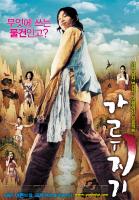
The fact is that 20th century Korean fiction was, very often, gloomy stuff. Older Korean literature ranged from bizarre and fantastical mythology (such as certain tales found among Korea’s various Three Kingdoms narratives) to bawdy ribaldry (as in texts like the Garoojigi, a folk narrative recently made into a feature film), and from literary eclecticism (such as the fascinating genre of literary miscellanies — collections of mini-essays, translations, reminiscences, and translations from Chinese literature like this one — that grew popular during the Joseon Dynasty (1392-1910)) to religious and moral narratives (like The Cloud Dream of the Nine or the Buddhist pilgrimage narrative The Hye Ch’o Diary). In stark contrast, a great deal of celebrated twentieth-century Korean literature focused often on issues of identity, of cultural integrity, of loss and pain and suffering related to modern Korean history, especially the experience of being a Japanese colony from 1905-1945, and of the Korean War and the resulting split of the two Koreas, a split which divided families and which remains a national preoccupation today.

When I first arrived in South Korea, I clearly remember reading an article in a local English newspaper highlighting the tensions between younger writers, who were dealing with subject matter familiar to them from daily life — romantic relationships, work, contemporary politics, and recent history — and older authors who sternly criticized them for failing to write about what seemed to become the default (and almost the only) suitable topic for literary work in the South: the trauma of the Korean war and the division between North and South Korea. To anyone who has even casually read South Korean mainstream fiction, the standard metaphors quickly become familiar: stories feature loss of memory, broken families whose final reunion symbolizes the reunification of Korea, returns to ancestral villages, and mysterious disappearances within families, workplaces, or communities. A lot of it is gloomy, grim stuff.

Part of this is a result of the way the postcolonial dictatorships (and the intellectuals they employed in rebuilding the education system after the Japanese left in 1945) went about building national identity. Han, a supposedly untranslatable word describing a mixture of unbearable burden which cannot be cast aside, a sense of resignation, and the pain of terrible suffering, has been elevated in a profound sense to the level of a keyword in Korean identity now.
I have been assured more than once that this is new to Korean literature, which was, pre-1900, much more diverse. (And even prior to World War II, authors such as Yi Sang — a penname appropriately homophonic to the Korean word for “strange” or “weird” — also experimented a great deal, not feeling bound to discuss only the colonial experience and nothing else.) In the postwar era, Korean literature focused on the past, probably as much out of the urgent sense of a need to build a national identity in the face of grinding poverty, a postcolonial social complex, the near-complete leveling of their monuments and cities, and probably as a way of avoiding the dire repercussions for any criticism of the dictatorships that ran South Korea from after the war until near the end of the 1980s.
In this literary environment, SF remained marginal for many years, in a sense understandably because Korea was, after all, pretty much a medieval society into which little of the outside world had penetrated prior to the Japanese occupation, and which remained mostly agrarian until modernization campaigns throughout the 1960s, 70s, and 80s. There were attempts to use SF as bait for interesting children in science and technology, and such titles as I, Robot, The Day of the Triffids, and The Time Machine (as well as a smattering of Star Trek novelizations) were translated into Korea for kids to read. (For a more complete list of titles, check out this webpage, where many works are available, probably illegally, in PDF format.) The books included texts added by (if I recall correctly — the PDFs don’t display on my PC so I cannot check for sure) the Ministry of Science and Technology highlighting the importance of science and technology in Korea’s development, and suggesting the connection between this concern and SF as an enticement to study science.
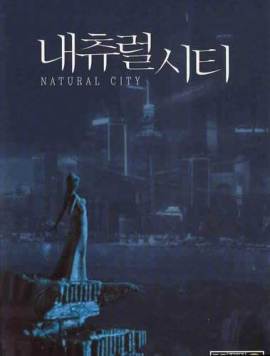 But while this probably did hook some young readers during their Golden Age (that is, the age of 12 years old) it also helped to build a sense among Koreans, persistent even in the present, that SF was really “kid stuff” or “junk” in terms of its literary merit. While certain authors (notably Bok Geo-il, though he certainly was not the only one) experimented with SFnal themes and tropes, they (importantly, according to award-winning translator/author Jeong So Yeon) did not consider themselves as SF writers. According to Ms. Jeong, the phenomenon of “SF authors” in Korea is relatively new, dating back to the late 90s at the earliest. Even today, mainstream literature is called soon moonhak (literally “pure literature”), a field from which SF is excluded on the basis of its relative “impurity.”[ii]
But while this probably did hook some young readers during their Golden Age (that is, the age of 12 years old) it also helped to build a sense among Koreans, persistent even in the present, that SF was really “kid stuff” or “junk” in terms of its literary merit. While certain authors (notably Bok Geo-il, though he certainly was not the only one) experimented with SFnal themes and tropes, they (importantly, according to award-winning translator/author Jeong So Yeon) did not consider themselves as SF writers. According to Ms. Jeong, the phenomenon of “SF authors” in Korea is relatively new, dating back to the late 90s at the earliest. Even today, mainstream literature is called soon moonhak (literally “pure literature”), a field from which SF is excluded on the basis of its relative “impurity.”[ii]
All of this goes some way to explaining why people I talked to about the theme of optimism in SF tended to talk more regarding optimism about the growth of SF as a literary field in the Korean market — the hope that the genre could grow in popularity, that fandom could build up in size and in its scope, and the desire to increase the translation of foreign SF into Korean for eager readers.
Ms. Jeong had very interesting things to say also about the specifically Korean sense of a notion like “optimism,” related to the different social construction of optimism and the specifically Korean understanding of what problems make literary sense. For example, she noted that in Korean SF, it’s much more common for the narrative problem to focus on something domestic, something specifically Korean, such as the education system. (Contrary to what President Obama thinks, pretty much everyone in Korea sees the public school system here as rife with problems that both dire are difficult repair. Perhaps the best book on the subject in English is Michael J. Seth’s Education Fever.)
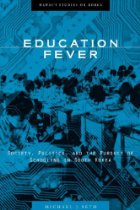
Jeong pointed out — and it resonates well with my experience in the classroom and in social situations — that Koreans tend to be primarily interested in problems of national concern: South Korea’s broken education system is, socially, a much higher priority than global warming, and the result according to Jeong is that characters who are concerned with globally pressing problems come across to Korean readers as unbelievable or unrealistic. Thus, the themes that predominate Korean SF — even in stories of alien invasion, like “Proxy War,” a locally well-known novella[iii] by a South Korean cyberpunk writer going by the penname Djuna — seem to resonate mostly with local, national issues of concern, and not the “big problems” that an anthology like Shine or the Mundane SF movement urges SF authors to tackle.
(More SF at the same Crossroads site where “Proxy War” was published, which hosts pretty much the only collection of Korean SF in currently available in English translation, can be found here.)
Moreover, according to Jeong there’s a certain sort of sensibility that is particularly Korean, in which characters are likely to try solve a problem but end up finding it insoluble. The solution may arise, but more as a matter of chance or luck, or of some change in the system beyond the schemings of would be problem-solvers. (One case Jeong cited was, I think, from her own writing, about how a crippled astronomer finally got a chance to become an astronaut, but only because the government realized that physically handicapped people made for lighter payloads on space missions. In another story by another author, she described how teacher found a way to free the children from the shackles of the schoolroom and of alien mind — an apt metaphor for Korean educational problems — but only by sending his students into outer space.) The sense of people surrendering and throwing their hands up in resignation in the face of intractable problems is a very Korean aesthetic, probably a result of historical circumstances and one may suppose a habit learned under long dictatorships; this is optimism in a society without a truly utopian social tradition, and a society only now beginning its third decade of ostensible democracy.
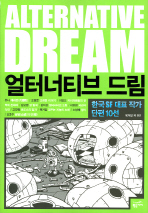 Despite the fact that SF tropes are well-enough known to have become part of the popular political discourse in South Korea (see my article in Clarkesworld on the subject), SF remains relatively marginal here. As a result, the lines between professionals and fans are extremely blurry, and the cross-pollinating influences are still quite profound, something I find really refreshing and invigorating. Make no mistake: economics does enter into the picture, but passions are also a powerful driver for the way Korea’s native form of SF is taking shape. There are, for example, currently two major fan clubs I’ve come across: JoySF and Mirror.
Despite the fact that SF tropes are well-enough known to have become part of the popular political discourse in South Korea (see my article in Clarkesworld on the subject), SF remains relatively marginal here. As a result, the lines between professionals and fans are extremely blurry, and the cross-pollinating influences are still quite profound, something I find really refreshing and invigorating. Make no mistake: economics does enter into the picture, but passions are also a powerful driver for the way Korea’s native form of SF is taking shape. There are, for example, currently two major fan clubs I’ve come across: JoySF and Mirror.
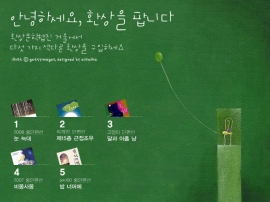 I don’t wish to draw too-broad lines between the two, since overlap exists. However, to put it simply, JoySF is dominated by male fans and has a stronger focus on military SF or space opera, while Mirror has a larger number of female fans and tends to focus on SF with a social component, as well as fantasy. (I’m much less familiar with Mirror than with JoySF, in part because I’ve had a chance to attend a festival run by JoySF but not one by Mirror.) These two groups aren’t necessarily inimical to one another: Mirror set up a table and sold books at the JoySF festival I attended, and members of both groups gathered at the recent launch of a fan-stocked SF lending library in Seoul last month. The fact that more female fans are involved in Mirror also means a greater interest in fantasy, which is (it must be said) a genre that has far more successfully been popularized in Korea; and like everywhere, the dominant buyers of books are young women, who are rather more likely to be interested in fantasy or social SF than young Korean men. Both groups publish small-print material, zines and otherwise, in addition to more elaborate productions. But even points of overlap, they are somewhat separate organizations, with their own websites and social networks.
I don’t wish to draw too-broad lines between the two, since overlap exists. However, to put it simply, JoySF is dominated by male fans and has a stronger focus on military SF or space opera, while Mirror has a larger number of female fans and tends to focus on SF with a social component, as well as fantasy. (I’m much less familiar with Mirror than with JoySF, in part because I’ve had a chance to attend a festival run by JoySF but not one by Mirror.) These two groups aren’t necessarily inimical to one another: Mirror set up a table and sold books at the JoySF festival I attended, and members of both groups gathered at the recent launch of a fan-stocked SF lending library in Seoul last month. The fact that more female fans are involved in Mirror also means a greater interest in fantasy, which is (it must be said) a genre that has far more successfully been popularized in Korea; and like everywhere, the dominant buyers of books are young women, who are rather more likely to be interested in fantasy or social SF than young Korean men. Both groups publish small-print material, zines and otherwise, in addition to more elaborate productions. But even points of overlap, they are somewhat separate organizations, with their own websites and social networks.
Still, fan energy has been harnessed to achieve some amazing things in the recent past. For example, the establishment of the Seoul Science Fiction & Fantasy Library started out when one fan decided to find a place where he could offer his personal library — including many books that have gone out of print and are not really available anymore, even in libraries — for public lending. A real lending library including several hundred texts (not just fantasy and SF novels but also science books, books on RPG gaming, and more) and many hundreds of comic books, as well as other resources, was established basically using this one fan’s collection, supplemented by astounding numbers of book donations and/or purchases made with money donations. The library opened for business in March 2009, with a ceremony that, instead of featuring the traditional lucky pig’s severed head, had a talking Darth Vader helmet as the donations table centerpiece.
Likewise, the strong sense of identity within fandom is giving rise to other interesting projects, such as one academic association which is being formed at present to work in the area of the translation, study, and publication of Korean SF in English, of which I am lucky enough to have been invited to be a part. (The organization is so new that it hasn’t got a name or a website yet, but at the first meeting, the others I met there were simply bursting with interest in the project, and with spreading the word about an SF naissance going on in Korea.) One important dynamo of activity is Park Sang Jun, the publisher of the Omelas book imprint that specializes in SF, and has recently produced stunningly packaged Korean translations of novels by authors like Lem and Stapledon; he is so actively involved in the SF scene here that he seems to be in ten places at once, from organizing film screening series and workshops to launching the aforementioned new academic association and speaking at science fiction events; his tireless efforts have contributed to almost every SF-related event I have attended in Korea.
Fandom also plays a massively important role in the building of the SF canon in Korea, both in terms of foreign works in Korean translation, and in terms of the development of domestic Korean SF. As stated earlier, the line between pros and fans is very blurry: many people I have been introduced to as fans also turned out to be aspiring translators or authors, and several well-regarded authors are also translators and ardent fans themselves. The reputation-economics that determines the success of foreign SF in translation is a topic I’m researching right now, specifically looking at how authors like Ted Chiang, Roger Zelazny, and Ursula K. Le Guin have achieved popularity here; each of these authors seems (to me) to occupy a slightly different position within the Korean SF canon than in his or her own language — a position interestingly contextualized not by other major SF authors that surround them in English, but by other factors such as the reputations of those who have translated their work, and the care and attention that their texts have been given by dedicated translators who work so energetically in part because of their own ardent fandom of that particular author’s work. Likewise, fandom supports younger authors by publishing their work in zines and allowing them to build a reputation that will springboard them into the world professional publication.
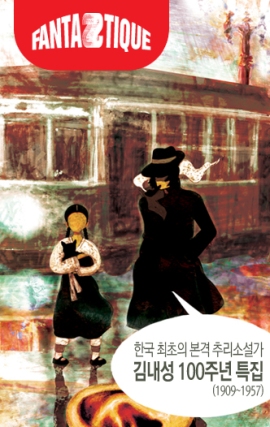
No doubt, Korean SF is still growing, and growing pains are inevitable, especially at the present time; the economic situation here is, if less profound than in the USA at the moment, nonetheless having pronounced effects on the publishing industry. For example, the (beautiful colorful, 300-page-thick) monthly SF magazine Fantastique — which launched in 2007 and offered regular translations of foreign SF and fantasy as well as new work by Korean authors, reviews, historical overviews, current-events columns with an SFnal twist, and more — has recently shifted from monthly to quarterly publication.
Likewise, book-publishing is hurting everywhere in the world, and translators with whom I’ve spoken have expressed anxiety about their recent translations of new-to-Korea authors, because if the first book by a “new” author fails to garner enough sales, later translation proposals are unlikely to be accepted. (A disappointing example of this is Greg Egan’s work: despite ardent admiration of his writing among a small minority of Korean SF fans, the Korean-language translation of Quarantine unfortunately seemed to garner too little general interest to warrant further translations of Egan’s oeuvre, as one Egan-fan complained to me.) Besides, Korean SF authors are struggling to adapt SF — a genre that is, if not about science, at least deeply informed by science, to a society that I have heard (and read) Korean SF translators complain is not so interested in science as it is in the tangible trappings of modernity. Korea is, after all, a society whose scientists and engineers are, it is often said, less respected and valued than are its doctors, lawyers, and even its celebrities. (There are exceptions, of course, but there is a pronounced lack of interest in science, and parental encouragement into other areas — including government bureaucratic work — is only one reason.)
But thanks to the efforts of fans, publishers, authors, and translators — and a dedicated core of people playing several of those roles simultaneously — SF in Korea is definitely on the move, growing and developing, adapting to this new environment just as any immigrant must do in order to thrive in an unfamiliar new land. The various people I’ve met who are involved in the scene are so energetic, devoted, and active that I have little doubt that the literature of the future has a bright future here.
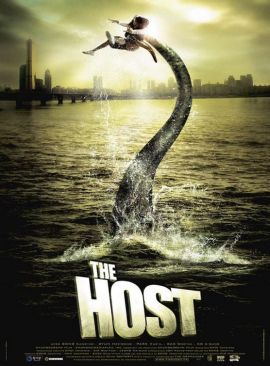 For more on other aspects of Korean SF — such as cinematic SF in Korea, festival/con reports, SF-related Korean rock music, the success of the Raelian UFO cult in Korea, and more — readers might want to check out the series on the subject at my blog, which begins here.
For more on other aspects of Korean SF — such as cinematic SF in Korea, festival/con reports, SF-related Korean rock music, the success of the Raelian UFO cult in Korea, and more — readers might want to check out the series on the subject at my blog, which begins here.
#
Gord Sellar
(NB: edited April 14 with the replacement of a manga (Japanese) picture with “Alternate Dreams” picture, the addition of two movie posters (“The Host” and “Natural City”), and the correct romanisation of Mr. Park Song Joon’s name.)
[i]According to columnist, archivist, and SF publisher Park Sang Jun in his article “Science Comes to Life For All” (Beyond: Korean Air, November 2008).
[ii]Indeed, readership of books in general in Korea seems to be shaped by older prejudices against fiction and towards “useful” nonfiction: a visit to any Korean bookstore will surprise Westerners, who will find a much larger proportion of nonfiction to fiction than in conventional Western bookstores. In the Preface to his translation of A Korean Storyteller’s Miscellany (Princeton University Press: Princeton, 1989), Peter H. Lee explains:
In [pre-modern] Korea, the traditional prose narrative, whether fictional or not, was deemed unofficial because it created a world other than that sanctioned by the court and offered an alternative view of reality. This social and cultural ordering of the Confucian society is mirrored in the spatial taxonomy. The East Asian term for the fictional narrative, sosŏl (hsiao-hsun in China and shōsetsu in Japan), literally “small talk,” stems from this prejudice against any writing that was viewed as unofficial by the custodians and censors of the dominant culture. (x)
Sosŏl is the term that is still used for both novels and short stories in contemporary Korean literature.
[iii]“Proxy War” was expanded into a novel of the same name, but the novel has not yet been translated to English. Indeed, as far as I have been able to discover, no Korean SF novel has yet been translated to English. The narrative focuses on how an alien sex-tour industry based in a satellite city of Seoul goes badly wrong, along the lines of an alien invasion and outbreak of war, but the story, at least in the novella, plays this trope out in uniquely Korean ways, and to highly comical effect.
The Week in Tweet, Week 13
Before we go to the next week of Twitstream, first a review with compliments from Twiction.
While Outshines focus is narrow, it is nonetheless one of the great literary joys of Twitter, a rare spot of thoughtfulness that I look forward to each week. In an ideal world, I’d like to see a more frequent publishing scheme. With more support and time, perhaps in the future.
A great start of the week!
Monday March 23:
[Quote for the Monday] “We tend to overestimate the effect of a technology in the short run and underestimate the effect in the long run.”
[Source] Roy Amara/Leader at the Institute for the Future/A think tank.
[Ed] Submissions statistics, week 12: 18 submissions, 13 from males, 5 from females. 1 acceptance.
Tuesday March 24:
Pop hooks, harmonised vox, synths and guitars, soppy lyrics, maddeningly catchy – this is Prog2.0, and you may love it in spite of yourself.
[#SoundBytes] AMOR VINCIT OMNIA by Pure Reason Revolution: http://is.gd/naBc / Superball Music: http://is.gd/oUD4 .
Wednesday March 25:
He opened his onyx eyes, and I knew I would fight every xenophobe on Earth for the joy of holding my hybrid alien son.
[Bio] Amanda Davis sings along with the radio even when she doesn’t know the words. She blogs at http://is.gd/fync .
Thursday March 26:
If you see one Amityville Horror rip-off this year, it might as well be this. Loved the kid ralphing the endless twisty mushroom thingey.
[#Spitballs] The Haunting in Connecticut/Directed by Peter Cornwell/ http://is.gd/p8nf .
Friday March 27:
[Quote for the Friday] “A novel is a forest, but the short story is a seed. It is more atomic. The atom may contain the secret structures of the universe.”
[Source] Ben Okri (1959 – ) / Nigerian novelist, short-story writer, and poet, 1992.
Saturday March 28:
Chimay beer sales are on the rise
As drinkers get more eloquent and wise
Trappist monks feign surprise
With an enigmatic glint in their eyes
[Bio] Eva Chapman. UK. Aspiring Boho & rock chick, optimistic re future; writes about that and healing the past; check me out @evitchka .
Sunday March 29:
Neopolis’ finest find themselves with new management and major new troubles in an engaging second season of super-powered police work.
[#ShineComics] Top 10: Season 2, #1-#4 by Zander Cannon (script) and Gene Ha (art); America’s Best Comics, 2009, $3.99 each.
The Week in Tweet, Week 12
Where @outshine experiences a hiccup, and more than makes up for lost items:
Monday March 16:
[Quote for the Monday] “Life is a short day; but it is a working day. Activity may lead to evil, but inactivity cannot lead to good.”
[Source] Attributed to Hannah More (1745 – 1833) / British writer and philanthropist.
[Ed] Submissions statistics, week 11: 26 submissions, 14 from males, 12 from females. 3 acceptances.
Tuesday March 17:
Porcupine Tree frontman’s solo début; no real surprises, but wide palette of sounds married to epic songwriting. Try listening in the dark.
[#SoundBytes] Insurgentes by STEVEN WILSON – http://swhq.co.uk/ / K-Scope Records – http://www.kscopemusic.com/ .
[Ed] *Exasparated sigh* Now I hope @PaulGrahamRaven ‘s review does *not* disappear in cybernirvana. I was sure I posted it yesterday.
Wednesday March 18:
Weapon factories filled with silence
withdrawal of desert violence
defense funds poured into education
brought a golden age to our nation.
[Bio] R. Schuyler Devin: a writer who prefers to walk halls of his own imagining rather than the dark alleys of his past. Join him @rsdevin
Thursday March 19:
[Ed] Attentive followers noticed there was no #Spitballs review March 5. Making amends with two reviews: one by Lucius, one by someone else.
[Ed] Two reviews of the same movie. To make things more interesting, I will reveal who was the reviewer of each review tomorrow. Enjoy…;-)
Flawed heroes investigate noir whodunit in alternate timeline 1985. Nuclear war looms. Graphic novel translated into smart slick sick flick.
This film plays like a half-ass tour of a wax museum devoted to the source material, with a lame soundtrack of Golden Oldies to match.
Friday March 20:
[Quote for the Friday] “Good writing is like a bomb: it explodes in the face of the reader.”
[Source] Nuruddin Farah (1945 – )/ Somali novelist, playwright, and teacher/ Sardines.
[Source] ![]() Ernest Hemingway (1899 – 1961)/U.S. writer/Acceptance speech, Nobel Prize in literature.
Ernest Hemingway (1899 – 1961)/U.S. writer/Acceptance speech, Nobel Prize in literature.
Saturday March 21:
[Ed] To mark the beginning of Spring, a Saturday Night Special Extravaganza: Kierkegaard reversed, an abstract trilogy. Experience!
Living forwards with bigger memories—the past became too hard to understand, and so we opened out ourselves—in tomorrows of present purpose.
A suicide explodes, but this time the free world gave way to the open world.
Our future distributed the past among our presents openly, and enough for everyone, even for those longing to perfect the world.
[Bio] meika lives in Tasmania and no longer writes for humans. twitter.com/meika .
Sunday March 22:
A twisted and funny upending of X-Files styled alien conspiracy stories, with snappy writing, oddball characters, and cheerfully mean art.
[#ShineComics] GROOM LAKE #1, script by Chris Ryall, art by Ben Templesmith; IDW, 2009, $3.99 .
[Ed] And to make up for the lacking Quote for the Friday last week – I have been extremely busy – here are two on the eve of Spring.
Kindred Spirits, part 4
In recent weeks three projects were brought to my attention (OK: I knew about one quite a bit longer, but it’s only been made public early this year) that are either optimistic or try to be more inclusive of SF outside the western world, or both.

- First of all, there’s The Apex Book of World SF, edited by Lavie Tidhar. Caveat: my story “Transcendence Express” (lead story in Hub #2 — the last print version — and reprinted online in Hub #44 and as a podcast on Escape Pod episode #122) will be reprinted there. Lavie approached me last year, so I knew about this project a while back. It’s full of stories both set in locales around the world, and written by writers from around the world (OK: predominantly from Europe and Asia/Oceania. I hope Lavie can do a second one that incorporates writers from Africa and Latin America). It’s slated for a September 1 release, but you can pre-order it here. Check it out!
- Following that, on February 26, Lavie started the World SF News Blog. I’m not sure if Lavie is aware of the ‘Optimism in Literature around the World and SF in particular’ series I’m doing right here on the Shine blog (next installment will be posted tomorrow!), so I’ll inform him about it.
- Ahmed A. Kahn — writer and editor of, amongst other things, SF Waxes Philosophical and A Mosque Amongst the Stars — has announced two new anthologies: Cheer Up, Universe and Fun Times in Strange Lands. The former looks for original SF/F that makes us feel good; the latter will be fully illustrated, and is aimed at pre-teens (“precocious kids between the ages of 10 – 12”).
I certainly don’t see the above projects as competition, but rather the contrary: that there is a growing undercurrent in SF that looks both for a truly more worldwide representation, and that looks for a more positive approach. Thanks to tireless people like Lavie Tidhar, Charles A. Tan — check out his mini-directory of SFF people on Twitter — Gord Sellar (check out his piece on Korean SF which I will post tomorrow), Fabio Fernandes and Jacques Barcia (and I realise I’m forgetting quite a few people here: apologies and do feel free to correct and/or inform me) non-Western SF is getting more attention. Also, as Matt Staggs noted earlier in the year, maybe the time has come for a post-snark era.
The Week in Tweet, Week 11
Where @outshine falters a bit:
Monday March 9:
[Quote for the Monday] “If we all worked on the assumption that what is accepted as true is really true there would be little hope of advance.”
[Source] Orville Wright (1871 – 1848)/American inventor and aviation pioneer.
[Ed] Outshine slush stats: 28 subs in week 10; 14 by men, 14 by women. 2 acceptances. Humour slot filling up nice, prose poems needed!
Tuesday March 10:
Jazz drums, poppy vocal melodies, layers of post-rock sonic texture, immigrant culture, neuroscience. Love or hate; indifference impossible.
[#SoundBytes] Sholi by SHOLI – http://www.sholi.com/ Touch & Go Records – ./http://www.touchandgorecords.com
Wednesday March 11:
She dissipated the past. Footsteps walking reclaimed beaches. Grinned as seagulls abandoned all worship of trash to instead hunt fish.
[Bio] Jason Sanford writes SF/F. His fiction and essays can be found at http://www.jasonsanford.com .
Thursday March 12:
Genetically inappropriate lovers bring new meaning to “it hurts so good” in this noir-ish romance, one of the best recent scifi films.
[#Spitballs] Code 46/Directed by Michael Winterbottom/ http://tinyurl.com/5shrap .
Saturday March 14:
Demonstration
“—over there!” He said, “Don’t believe me?
I’ll prove it the teleporter works.
Look for me—”
[Bio] Greg Beatty (http://gregbeatty.net) lives in Washington with his wife Kathy, where the biggest challenge is staying dry.
Sunday March 15:
So far the best of Marvel’s pulp-universe “Noir” minis, with atmospheric art and a grim, clever story that smartly redefines the characters.
[#ShineComics] X-MEN NOIR (four issues), script by Fred Van Lente, art by Dennis Calero; Marvel comics, 2009, $3.99 each.












